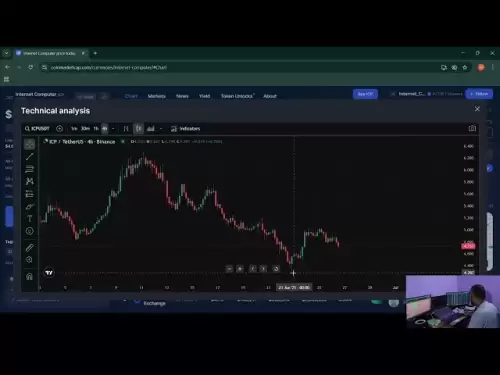-
 Bitcoin
Bitcoin $107,247.2038
-0.18% -
 Ethereum
Ethereum $2,424.7947
0.34% -
 Tether USDt
Tether USDt $1.0003
-0.02% -
 XRP
XRP $2.1171
-3.33% -
 BNB
BNB $645.6618
0.06% -
 Solana
Solana $141.5898
-1.32% -
 USDC
USDC $0.9998
0.00% -
 TRON
TRON $0.2710
-0.41% -
 Dogecoin
Dogecoin $0.1602
-2.99% -
 Cardano
Cardano $0.5553
-2.28% -
 Hyperliquid
Hyperliquid $36.3019
-2.42% -
 Bitcoin Cash
Bitcoin Cash $491.7212
2.04% -
 Chainlink
Chainlink $13.0810
-0.23% -
 Sui
Sui $2.6080
-5.06% -
 UNUS SED LEO
UNUS SED LEO $9.0040
-0.05% -
 Stellar
Stellar $0.2350
-3.06% -
 Avalanche
Avalanche $17.2294
-2.31% -
 Toncoin
Toncoin $2.8075
-1.05% -
 Shiba Inu
Shiba Inu $0.0...01121
-3.43% -
 Litecoin
Litecoin $84.2215
-0.32% -
 Hedera
Hedera $0.1429
-4.88% -
 Monero
Monero $312.2199
-0.90% -
 Dai
Dai $0.9997
-0.01% -
 Ethena USDe
Ethena USDe $0.9999
-0.02% -
 Polkadot
Polkadot $3.2973
-2.60% -
 Bitget Token
Bitget Token $4.4742
3.12% -
 Pi
Pi $0.5631
-10.10% -
 Uniswap
Uniswap $6.7817
-2.06% -
 Pepe
Pepe $0.0...09252
-3.74% -
 Aave
Aave $251.3830
-2.24%
How to buy and invest in Bitcoin
To start investing in Bitcoin, choose a reliable cryptocurrency exchange, open an account, fund it, place buy orders, and securely store your coins in a hardware or software wallet.
Jan 11, 2025 at 11:10 am
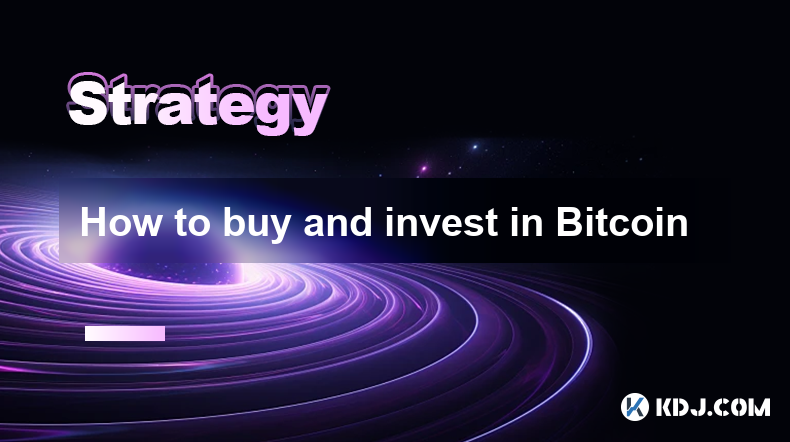
How to Buy and Invest in Bitcoin
Key Points:
- Understanding Bitcoin and its Investment Potential
- Choosing a Reliable Cryptocurrency Exchange
- Opening an Account and Funding It
- Placing Buy Orders and Monitoring Performance
- Storing Bitcoin Securely
1. Understanding Bitcoin and its Investment Potential
Bitcoin is a decentralized digital currency created in 2008 by an unknown person or group known as Satoshi Nakamoto. Unlike traditional fiat currencies, which are issued and controlled by central banks, Bitcoin is based on blockchain technology, an immutable distributed ledger that records all transactions securely and transparently.
As a store of value, Bitcoin has attracted investors due to its finite supply of 21 million coins, creating scarcity and potential price appreciation. Additionally, its decentralized nature protects against inflation and central bank manipulation.
2. Choosing a Reliable Cryptocurrency Exchange
To buy and invest in Bitcoin, you need to open an account with a cryptocurrency exchange. Choose an exchange that is reputable, secure, and offers competitive fees. Consider the following factors:
- Regulation and Licensing: Look for exchanges that are regulated by reputable financial authorities, ensuring compliance and user protection.
- Security: A strong security infrastructure is crucial. Verify if the exchange employs advanced encryption, multi-factor authentication, and cold storage for user funds.
- Fees: Compare the trading fees and other charges levied by different exchanges. High fees can eat into your profits over time.
- Customer Support: A responsive and knowledgeable customer support team can resolve any issues or answer questions promptly.
3. Opening an Account and Funding It
Once you have selected an exchange, create an account by providing personal information, including name, email address, and phone number. Most exchanges require identity verification through Know Your Customer (KYC) procedures to prevent money laundering and fraud.
Fund your account using a bank transfer, credit/debit card, or other supported payment methods. Note that some methods may have higher fees or transaction limits.
4. Placing Buy Orders and Monitoring Performance
To buy Bitcoin, navigate to the trading platform and enter the amount you want to purchase. Choose the market order option to buy at the current market price or a limit order to execute the trade at a specified price.
Once your order is placed, monitor its status and market conditions regularly. Track your investment's performance by following charts and technical indicators. Consider setting price alerts to notify you when Bitcoin reaches certain levels.
5. Storing Bitcoin Securely
After purchasing Bitcoin, it is crucial to store it in a secure wallet. Choose a wallet that aligns with your investment objectives and security preferences:
- Hardware Wallet: A physical device that stores your private keys offline, offering the highest level of security.
- Software Wallet: A downloadable application that stores your keys on your computer or mobile device, offering convenience but lower security than hardware wallets.
- Exchange Wallet: Some exchanges provide custodial wallets for storing your funds, providing ease of access but also exposing them to exchange-specific risks.
FAQs
1. What is the minimum amount I can invest in Bitcoin?
The minimum investment amount in Bitcoin varies depending on the cryptocurrency exchange you use. Some exchanges may allow you to buy as little as a fraction of a single Bitcoin.
2. How can I withdraw Bitcoin from my exchange account?
To withdraw Bitcoin from your exchange account, navigate to the withdrawal page, enter the amount you want to withdraw, and specify the wallet address where you wish to send the funds. Follow any additional security verification procedures required by your exchange.
3. What are the risks of investing in Bitcoin?
Bitcoin is a volatile asset, and its value can fluctuate significantly. Market conditions, news events, and regulatory changes can impact its price, potentially leading to losses for investors.
Disclaimer:info@kdj.com
The information provided is not trading advice. kdj.com does not assume any responsibility for any investments made based on the information provided in this article. Cryptocurrencies are highly volatile and it is highly recommended that you invest with caution after thorough research!
If you believe that the content used on this website infringes your copyright, please contact us immediately (info@kdj.com) and we will delete it promptly.
- Crypto Presales in 2025: MAGACOIN FINANCE and the Hunt for New Coins
- 2025-06-27 04:50:12
- Bitcoin's Next Leap: Will It Hit a New All-Time High with Michaël van de Poppe's Prediction?
- 2025-06-27 05:50:12
- Litecoin Mining in 2025: Rigs, Returns, and the Rise of Cloud Mining
- 2025-06-27 05:10:12
- LINK's Holder Count Soars as ATH Predictions Heat Up: What's Next?
- 2025-06-27 05:30:12
- Dogecoin, Meme Coins, and Price Predictions: What's the Hype?
- 2025-06-27 05:50:12
- Senate, Bitcoin, and the Reserve: What's the Deal?
- 2025-06-27 04:30:12
Related knowledge
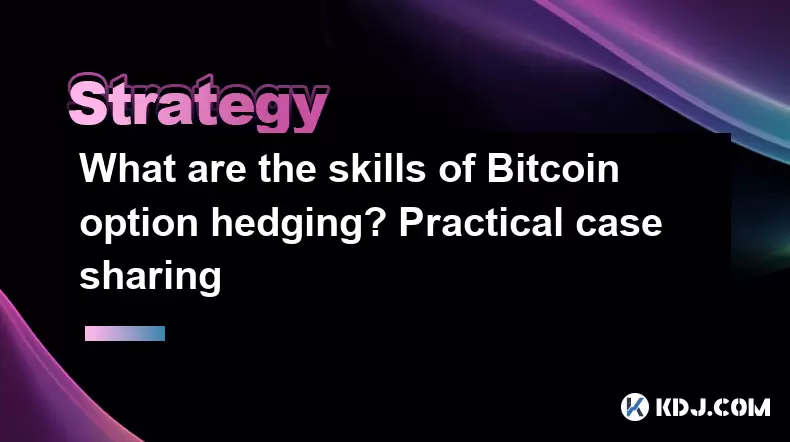
What are the skills of Bitcoin option hedging? Practical case sharing
Jun 24,2025 at 04:01pm
Understanding Bitcoin Option HedgingBitcoin option hedging is a risk management strategy used by traders and investors to protect their positions in the volatile cryptocurrency market. By using options, individuals can limit potential losses while retaining the opportunity for profit. In essence, it allows one to insulate against adverse price movements...
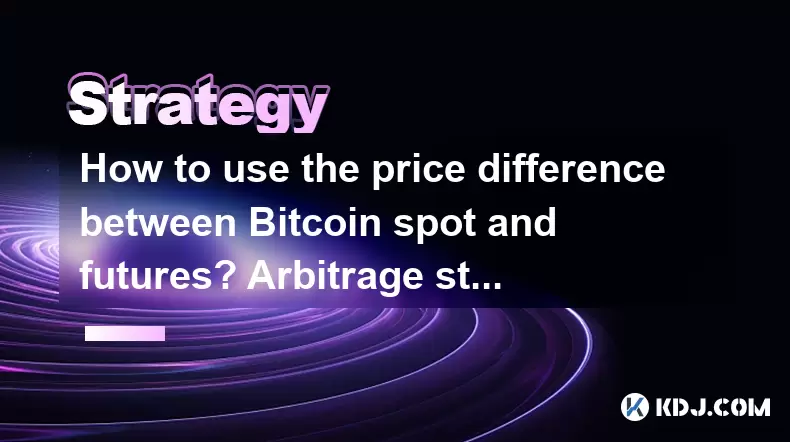
How to use the price difference between Bitcoin spot and futures? Arbitrage strategy
Jun 20,2025 at 02:56pm
Understanding Bitcoin Spot and Futures MarketsTo effectively leverage arbitrage opportunities between Bitcoin spot and futures markets, it's essential to understand the fundamental differences between these two types of markets. The spot market refers to the direct buying and selling of Bitcoin for immediate delivery at the current market price. In cont...

How to increase DeFi lending income? Strategy and risk analysis
Jun 24,2025 at 02:08pm
Understanding DeFi Lending and Its Income PotentialDeFi (Decentralized Finance) lending has emerged as a popular way to earn passive income in the cryptocurrency space. Unlike traditional banking systems, DeFi lending platforms allow users to lend their crypto assets directly to borrowers without intermediaries. The lenders earn interest based on the su...
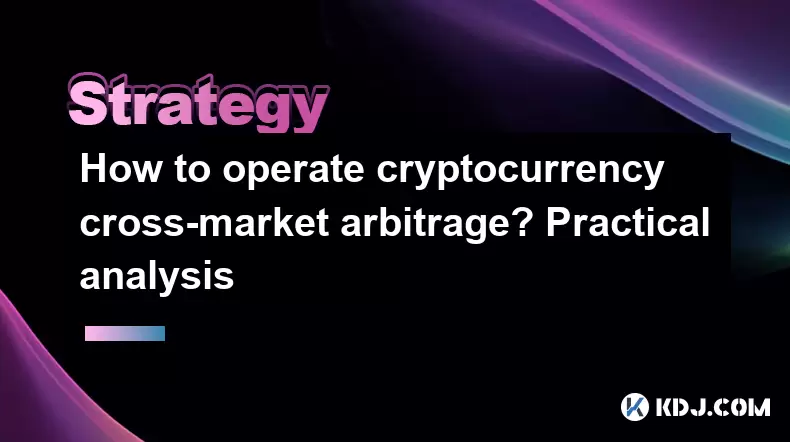
How to operate cryptocurrency cross-market arbitrage? Practical analysis
Jun 23,2025 at 04:01am
Understanding Cryptocurrency Cross-Market ArbitrageCryptocurrency cross-market arbitrage involves taking advantage of price differences for the same digital asset across different exchanges. The core idea is to buy low on one exchange and sell high on another, capturing the profit from the discrepancy. This strategy relies heavily on real-time market da...

How to make profits from high-frequency cryptocurrency trading? Sharing core skills
Jun 19,2025 at 05:07pm
Understanding High-Frequency Cryptocurrency TradingHigh-frequency trading (HFT) in the cryptocurrency market involves executing a large number of trades at extremely fast speeds, often within milliseconds. This method relies on small price discrepancies across exchanges or within a single exchange’s order book. Traders use complex algorithms and ultra-l...

What are the methods of cryptocurrency quantitative trading? Detailed analysis
Jun 22,2025 at 11:07pm
Understanding the Core of Cryptocurrency Quantitative TradingCryptocurrency quantitative trading refers to the use of mathematical models and algorithms to execute trades in the digital asset market. Unlike traditional discretionary trading, which relies heavily on human judgment, quantitative trading leverages data-driven strategies to identify profita...

What are the skills of Bitcoin option hedging? Practical case sharing
Jun 24,2025 at 04:01pm
Understanding Bitcoin Option HedgingBitcoin option hedging is a risk management strategy used by traders and investors to protect their positions in the volatile cryptocurrency market. By using options, individuals can limit potential losses while retaining the opportunity for profit. In essence, it allows one to insulate against adverse price movements...

How to use the price difference between Bitcoin spot and futures? Arbitrage strategy
Jun 20,2025 at 02:56pm
Understanding Bitcoin Spot and Futures MarketsTo effectively leverage arbitrage opportunities between Bitcoin spot and futures markets, it's essential to understand the fundamental differences between these two types of markets. The spot market refers to the direct buying and selling of Bitcoin for immediate delivery at the current market price. In cont...

How to increase DeFi lending income? Strategy and risk analysis
Jun 24,2025 at 02:08pm
Understanding DeFi Lending and Its Income PotentialDeFi (Decentralized Finance) lending has emerged as a popular way to earn passive income in the cryptocurrency space. Unlike traditional banking systems, DeFi lending platforms allow users to lend their crypto assets directly to borrowers without intermediaries. The lenders earn interest based on the su...

How to operate cryptocurrency cross-market arbitrage? Practical analysis
Jun 23,2025 at 04:01am
Understanding Cryptocurrency Cross-Market ArbitrageCryptocurrency cross-market arbitrage involves taking advantage of price differences for the same digital asset across different exchanges. The core idea is to buy low on one exchange and sell high on another, capturing the profit from the discrepancy. This strategy relies heavily on real-time market da...

How to make profits from high-frequency cryptocurrency trading? Sharing core skills
Jun 19,2025 at 05:07pm
Understanding High-Frequency Cryptocurrency TradingHigh-frequency trading (HFT) in the cryptocurrency market involves executing a large number of trades at extremely fast speeds, often within milliseconds. This method relies on small price discrepancies across exchanges or within a single exchange’s order book. Traders use complex algorithms and ultra-l...

What are the methods of cryptocurrency quantitative trading? Detailed analysis
Jun 22,2025 at 11:07pm
Understanding the Core of Cryptocurrency Quantitative TradingCryptocurrency quantitative trading refers to the use of mathematical models and algorithms to execute trades in the digital asset market. Unlike traditional discretionary trading, which relies heavily on human judgment, quantitative trading leverages data-driven strategies to identify profita...
See all articles
























